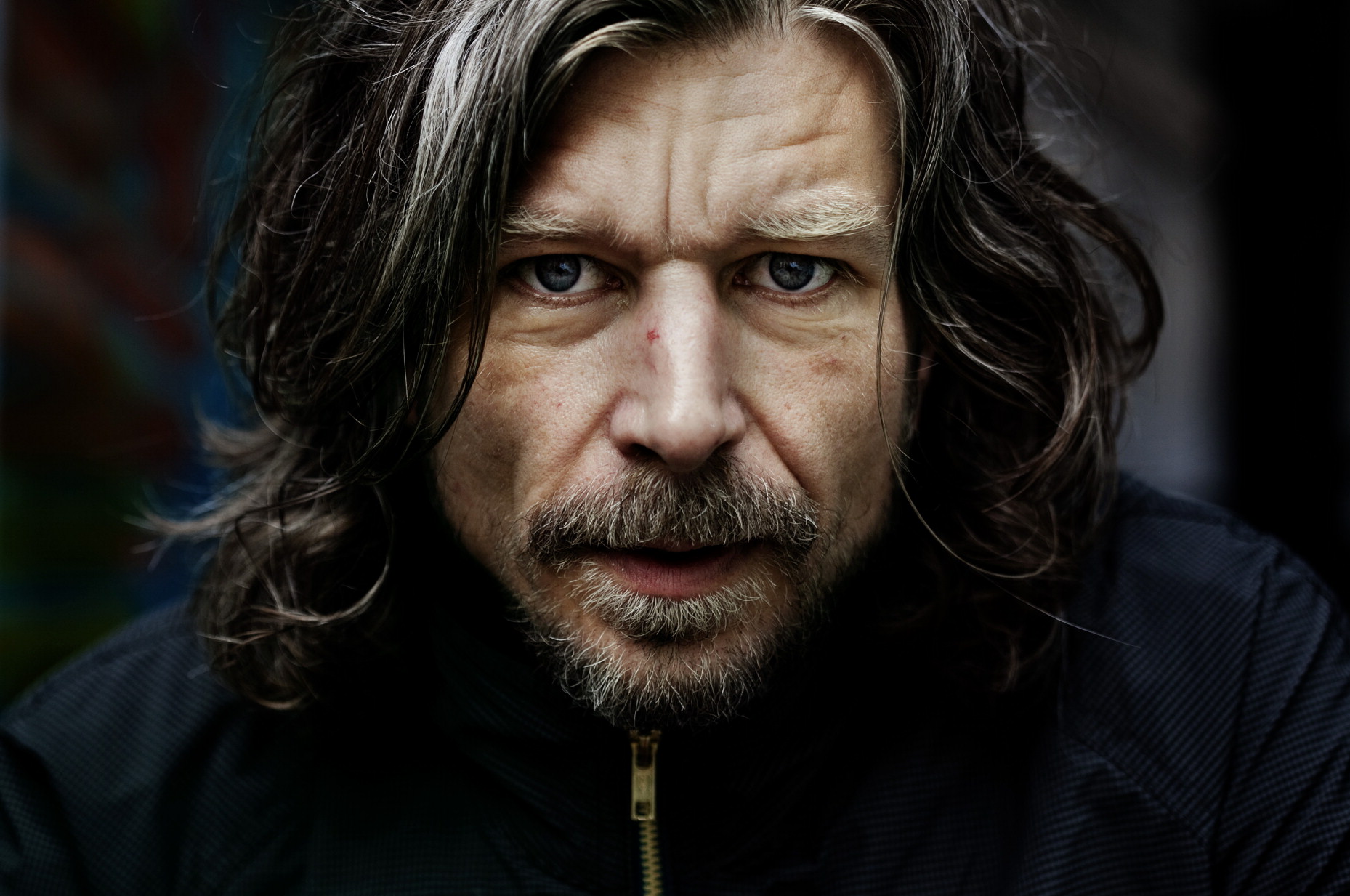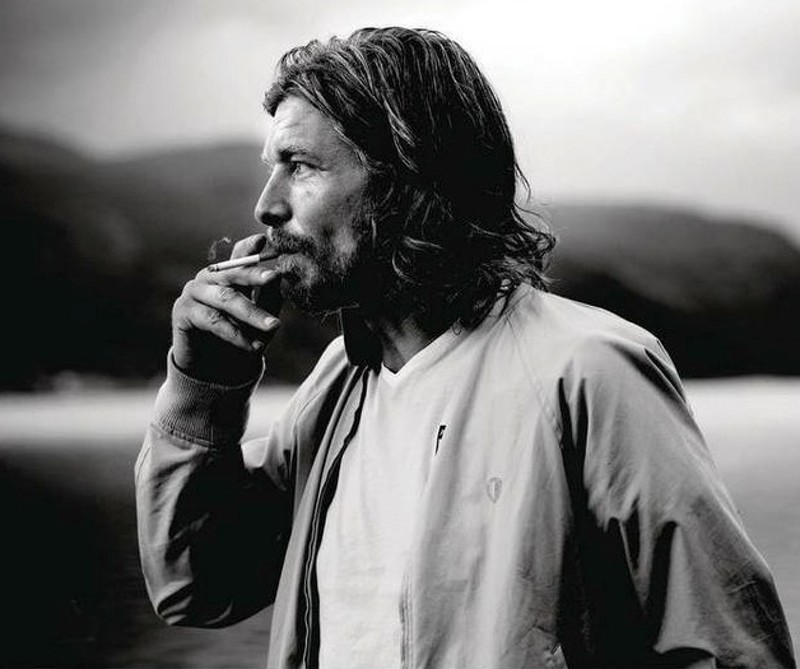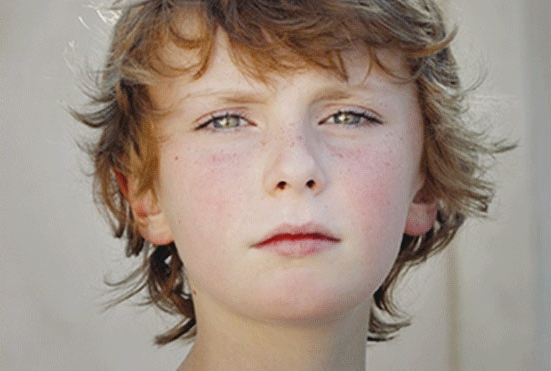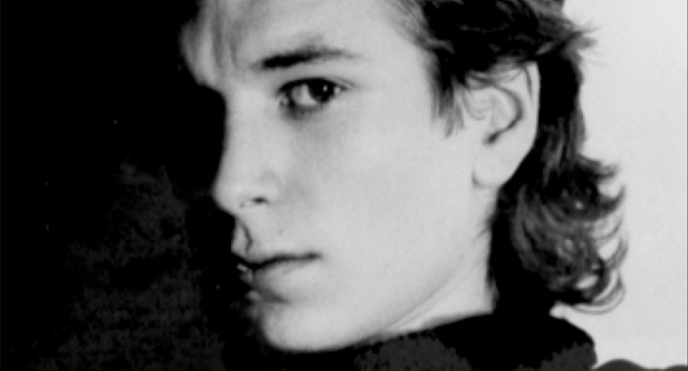My Struggle, vol. 2: Sarah Chihaya, July 5 (Guest Post)
Brooklyn, NY
Dear Cecily, Omari, Diana, and Dan,
Like Karl Ove, I'm partial to long, rambling stories without a punchline. That being said, I told Cecily a rare—still long and rambling—story with a punchline the other day, to get at my experience of reading Knausgaard. I'll spare you the full version, but here's the gist: once upon a time, a friend of mine played a practical joke on her admittedly quite bratty small nephew. The child, distraught by his first experience of being the butt of a prank, wailed an unforgettable lament that has since become my personal refrain—equally applicable to the morbidly funny infelicities of everyday life, as well as the bitterly unfunny events of contemporary political life:
Is it a joke or a trick?
And reading volume 2, that's what I constantly find myself asking of Knausgaard. It can't seriously be that, well, serious all the time—so it a joke? What's more, the vaguely elliptical time travel that made so much sense in volume 1, that swooping vertigo of loss that carries Karl Ove and us through that first few hundred pages, here feels more like so much narrative smoke and mirrors—so is it a trick? I'm no longer convinced by K's purported directness; maybe this is my own private hermeneutics of suspicion talking, but the more he goes on about the need for authenticity, the more I can't help but suspect he's up to something. But if My Struggle is playing some game, what are the rules? What are the stakes? Who is in on the joke? What is the nature of this trick?
I'll leave you to mull over those cynical big picture questions, and will hopefully return to a couple of them. First, though, the question immediately at hand: what's so funny about Knausgaard? Is this the face that launched a thousand snickers?
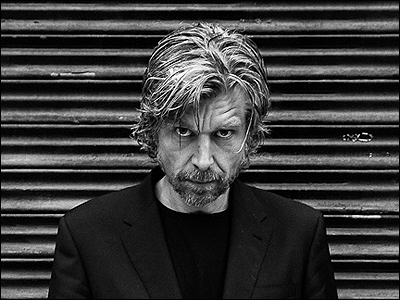
Are you serious?
Reading this volume, I found myself increasingly on the knife-edge of a kind of hysteria, always ready to burst into maniacal laughter either out of something resembling humor, or sheer disbelief, or maybe exhaustion, or all of the above. I think this neurotic reading partly comes from an uncertainty about when, if ever, we're meant to laugh in this book; descriptions or phrases that are just a teeny bit too ridiculous are embedded seamlessly within a narrative otherwise defined by its apparent earnestness. A brief example of this is Karl Ove at the grocery store (again, with the food!). At the cash register, he offers a truly horrifying and gratuitous description of the clerk:
The light above us was sharp and not a pore in her skin was left unexposed. Her mouth drooped at the corners, not because she was old, but because her cheeks were so big and fleshy. Her whole head was bloated with flesh. She might have spent a lot of time on her hairdo but it did nothing to improve the overall impression; it was like titivating the green top on a carrot. (102)
Description is Knausgaard's meat and bones (or rather, his crab and Jell-O), and the book is literally thick with it. From a distance, these passages all look kind of the same: punishingly detailed, "objective" (whatever that means), and utterly serious. But are they always? And how can we tell if they aren't? His favorite descriptive techniques of repetition—please never say "flesh" again, Knaus—and a simple lexicon that is shocking in its effectiveness are the very same ones he uses in other passages that I found incredibly beautiful and undeniably serious.
But back to the bourgeois food hall: Karl Ove then deliberates over whether or not to use his credit card to pay a tiny sum; in the end, he simply doesn't care, for, "did it matter what she thought about me? She was so fat" (102).
Knausgaard, Knausgaard, Knausgaard, are you serious??????
Upon first reading this—and upon a second reading now—I couldn't help but laugh. Not because it's funny (though "titivating" does titillate the funny bone, surely intentionally), but because it's appalling, and the only thing you can really do when faced with this particular kind of quotidian appallingness is laugh. This, I think, is not just Karl Ove being an earnest fat-shaming jerk (though that's part of it), but also Knausgaard subtly alerting us to this observational phenomenon: his incredibly deadpan depiction of the incredibly deadpan, funny-not-funny quality of everyday life. Reading your fantastic recent letters on volume 2, I'm comforted by the fact that I'm not alone; Karl Ove glowers bleakly at all of our uncertain laughter, apparently, for Omari and Cecily also drew out many of the funny (OR ARE THEY?) moments in v.2 that had me guffawing confusedly all over Brooklyn.

And I can't help but think, increasingly, that there is an immense and elaborate joke here, even if it's never precisely a funny one; if there was always a tear creeping up in Knaus's manly eye in v.1, maybe there's always a well-hidden twinkle in it here. After all, we learn in this volume that even serious Karl Ove submits to the very occasional fit of hysterical laughter himself. As he tells us, in what I've now come to see as classic Knausgaard deadpan, "Most people can't remember when they last laughed, but I remember when I laughed twenty years ago, because of course it doesn't happen that often" (116).
"Of course." I love this. How can you not laugh upon reading that someone hasn't laughed for twenty years? In moments like these, I am fleetingly convinced My Struggle is not, as Rachel Cusk wrote, "The most significant literary enterprise of our time," but rather the most bizarre comic masterpiece of our time. And indeed, laughter is something he flags quite precisely for us early and often as a quality necessary for the ideal reader. Describing the much-admired Arve, whose mien of "enormous tolerance" while listening inspires Karl Ove to relate what sounds like a preliminary version of v.1, Knaus says
[Arve] had a shrewd eye for the world, so it appeared, and like all those who have accumulated experience, by and large what remained was laughter. Laughter was really the only appropriate way to confront human behavior and notions. (189)
Looking back, you might also consider the many times Knausgaard comments on other people's laughter, or even just the fact that they're laughing—I'm thinking in particular of the New Year's party, where each person tells a horrifying story about their abusive/alcoholic/depressing parents, and then everyone else yuks it up. My favorite is Helena's:
"...once when I was alone on holiday with Mom she gave me a sleeping tablet, locked the door from the outside, and went on the town."
Everyone laughed. (301)
When it's Karl Ove's turn to talk about his own drunk dad, he offers a characteristically funny-not-funny story—but interestingly describes it as such, saying, "I don't know if this is funny, but, well, here we go" (301). And that seems to sum up his attitude towards humor in general; if, as Cecily put it, My Struggle is a "field guide for non-humans," we might consider v.2 a primer on the strange barbarism of the human custom known as "laughter."
So okay, maybe we are sometimes invited to see My Struggle as something of a joke—like life, a long and mostly unfunny one, served up on the deadest pan in recent literary history, at which all you can do is laugh. But how about the other half of the question: is it a trick? James Wood explicitly says no. In his review for the New Yorker blog, he wrote that "[Knausgaard wants] to strip away the literary tricks, to burst through language, to explode the artifice." However, contra Wood, I'm interested in the various, specifically "literary" tricks Knaus employs in this volume. Consider, for example, the somewhat surprising background presence of Italo Calvino, who pops up a few times in the book. The first reference is itself a tricky and allusive one, one that might dodge the eye of anyone but the most Calvino-obsessed reader:
...the Swedish poet Marie Silkeberg leaned over to me and asked why especially she should read my novel, and the best reply that occurred to me was that perhaps it was the kind of book you were simply drawn into, to which she responded with a fleeting smile and subsequently, not so fast that it was offensive, nor so slowly that it was without significance, glanced around for someone else to talk to. She was a poet; I was a writer of light fiction. (171; emphasis is mine)
First of all, how amazing is it that Knausgaard describes himself as "a writer of light fiction"? Again, there's that twinkle in the dour eye, the suggestion of a joke that double-dog-dares you to see it as such. Secondly, Calvino: readers of his 1979 reading romance If on a winter's night a traveler will recognize the formulation, "The kind of book that..." as a recurrent phrase from the latter. And indeed, though at first I thought this was just a fluke (after all, it's not such an uncommon phrase), on the very next page, we find K's first overt reference to Calvino. Talking to Geir about the incremental form of Inger Christiansen's sonnet cycle The Butterfly Valley, he comments that "Italo Calvino does something similar in If on a winter's night a traveler...But it's not as strict, of course." (172).*Warning: this is where the conspiracy theory section of this letter begins.*
Reading this, I began to wonder about Knausgaard's own status as a manipulator of forms, and thinking about what kinds of narrative tricks he might be playing, for all his protestations of honesty and directness. From a certain light, you might see a faint shadow of If on a winter's night a traveler's distinctive form of successive, seemingly unrelated narratives that open and don't close reflected in Karl Ove's own distinctive form of successive, only loosely linked and open-ended stories. Knausgaard's narratives, unlike Calvino's, do all conclude in their various ways, but sometimes many hundreds of pages later—not unlike an unannounced and less overtly metafictional version of David Mitchell's Calvino-related gambit in Cloud Atlas. This makes for a challenging exercise in readerly recall that has to do with the dilation of time you all discussed in v.1; it's only little clues (like the word "entrecôte" or the New Year's lobsters) that remind us that episodes that seem discrete in time and space are actually connected across hundreds of pages. The groceries purchased on page 101 don't get cooked until 351; the New Year's feast started on 119 doesn't conclude until 321. If this isn't a narrative trick, I don't know what is. And in fact, in that conversation with Geir, Karl Ove defends the tricksiness of metafictional devices and their makers:
"Calvino, Borges, Cortázar, you can keep them," [Geir] said. "I don't like fantasy and I don't like constructs. For me it's only people that count." [...]
"What you heard was the voice," I said. "It overrides all numbers and systems. And it's the same with Borges as well, at least when he's at his best." (172)
And it's the same, I think we're meant to believe, for Calvino (who appears again a couple of times in the book), and more importantly, for Knausgaard as well—at least, when he's at his best. What's interesting, however, is that for K, it's the voice itself that's the construct—an artifice whose masquerade of directness and authenticity is just as much a "literary trick" as any of Calvino's multiplied narratives. One might say that while If on a winter's night a traveler distracts with its flashy structure of layer upon layer of narratives, at its heart, it's really a book about the desire for the idea of narrative itself; so too is Knausgaard's intense laying on of "voice," of "authenticity," of "directness," at its heart about the desire for the idea of voice. Or perhaps, layer upon layer of "memory" that only really express the desire for the idea of memory; K. is, after all, a man who "forgets everything," whose "brain [is] like Swiss cheese without the cheese" (480).
I could go on and on and on about this Calvino/Knausgaard conspiracy theory (I didn't even get to love stories, or the pattern of narratives, OR The Baron in the Trees!). But I've already gone on too long, and things are starting to get crazy, so I'll just end by invoking one more of Knausgaard's tricky (or is it?) non-tricks. As we near the end of v.2, we get an increasing number of by-now-expected pontifications on the nature of art. Knausgaard draws our attention particularly to the paradoxical intertwinement of distance and closeness in relation to the artist, the artwork, and the reader saying, "Form draws you out of yourself, distances you from yourself, and it is this distance that is the prerequisite for closeness to others." (561)
This confusing distance-for-closeness might bring some of these questions about jokes and tricks into focus. Like with the descriptions, everything looks like it's made from the same stuff from a distance—nature and artifice, humor and seriousness, memory and fiction. The seemingly unmediated formlessness of this book, and of this project overall, is itself a specific, often tricky and always self-reflexive form. In other words, to look honest, you have to engage in a number of tricks along the way.
Thinking through this problem, I'm reminded of Karl Ove's meandering travels through Google Maps, my favorite of his extended descriptions of 21st century procrastination. As he swoops around South America on Google Earth, we see a lack of distinction between what is natural and what is constructed: from the satellite's eye, planes look like "a flock of white birds" by the water, deserts, towns, cars, rivers, trees, all are flattened into the same virtual plane. His eye snags on a particular thing, unidentifiable right away—"what seemed like three enormous swimming pools in the middle of a park," a bizarre convergence of the natural and unnatural. "What could it be? [He] zoomed in closer. Aha! An aquatic park!" (413).All of these professions of reality, of authenticity, of life as it is lived, are so clearly constructed. We're meant to feel adrift with Karl Ove, seemingly at the mercy of memory's unpredictable and swirling currents. But is this body of text we're swimming in (or drowning in, whatever the case may be) a natural phenomenon, or a very convincing water park?
JK, JK, JK. Or am I?
Sarah
ALSO IN THIS SERIES:
The Slow Burn, v.2: An Introduction
My Struggle, vol. 1: Cecily, June 6
My Struggle, vol. 1: Diana, June 9
My Struggle, vol. 1: Omari, June 14
My Struggle, vol. 1: Dan, June 17
My Struggle, vol. 2: Omari, June 24
My Struggle, vol. 2: Cecily, July 1
My Struggle, vol. 2: Sarah Chihaya, July 5
My Struggle, vol. 2: Dan, July 12
My Struggle, vol. 2: Diana, July 16
My Struggle, vol. 2: Jess Arndt, July 18
My Struggle, vol. 3: Omari, July 25
My Struggle, vol. 3: Ari M. Brostoff, August 1
My Struggle, vol. 3: Dan, August 4
My Struggle, vol. 3: Jacob Brogan, August 8
My Struggle, vol. 3: Diana, August 12
My Struggle, vol. 4: Katherine Hill, August 25
My Struggle, vol. 4: Omari, September 1
My Struggle, vol. 4: Dan, September 2
My Struggle, vol. 4: Diana, September 15
My Struggle, vol. 5: Omari, September 27
My Struggle, vol. 5: Diana, October 3
My Struggle, vol. 5: Dan, October 13

